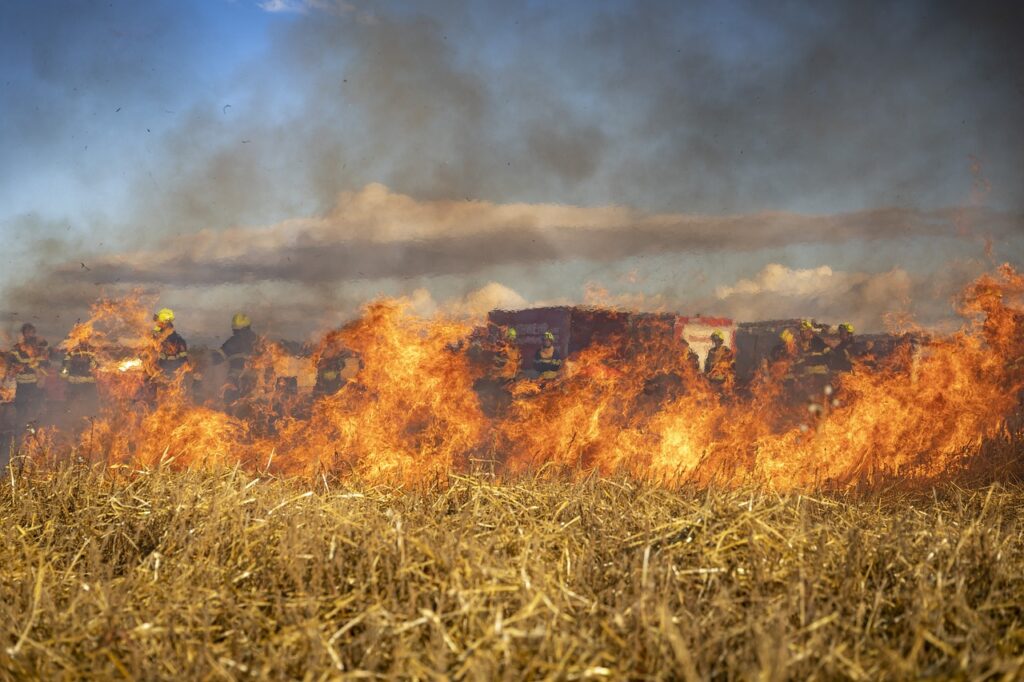
Southern California has been plagued with fires for the past 2 weeks, the biggest and most horrific being the Palisades and Eaton fires, both of which started in Los Angeles on the 7th of January. As of right now, there have been at least 24 casualties, over 40,000 acres burnt, and tens of thousands of structures destroyed. Thousands have lost their homes and have been forced to leave the city or even the state in the wake of all the destruction. The Palisades fire has been named the most destructive in the city’s history, but LA and its surrounding counties are not unfamiliar with fires and the devastation they bring.
Back in 2018, the Woolsey fire burned almost 100,000 acres of land in Los Angeles and Ventura County, killing 3 people and taking almost 2 weeks to contain completely. That same year, the Thomas fire claimed over 280,000 acres of Santa Barbara and Ventura County, the two counties just north of Los Angeles. At the time, the Thomas fire became the biggest wildfire in modern California history, overtaking the previously biggest fire from 2003. Today, just seven years later, the Thomas fire comes 8th overall in the rankings. These fires have become a consistently worsening routine for Californians, but why?
LA is an incredibly wealthy city, home to billionaires and celebrities alike. You’d think they could afford to provide some safeguards against fires or at least a fire department capable of protecting the area. You’d be right, and while it’s surprising to hear considering the current state of Los Angeles, the LA Fire Department has a current yearly budget of almost 1 billion dollars, along with the help of fire departments from other areas in containing the recent fires. There could always be more means of protection in place, but there’s only so much that can be done when California’s current climate makes it nearly impossible to prevent these fires from occuring. The only cure against California’s fire epidemic is for action to be taken against the root cause: climate change. Tragically, the US federal government’s glaring lack of concern for the climate crisis, along with nationwide ignorance and denial, makes it very difficult to combat this already difficult situation.
Climate change is the obvious culprit behind the escalation of fire occurrence, but the mechanism for this isn’t as obvious as you may think. In drought ridden Southern California, large thunderstorms in recent winters have been a welcome development in a region where rain is scarce. These storms are the product of a changing atmosphere, and the heavy downpour and flooding they bring causes vegetation to, ironically, spread like wildfire come the spring. With no rainfall and cripplingly high temperatures in the summer months, that vegetation dries up and becomes extremely flammable. At this time of year, referred to as “fire season” by locals, the land is at its driest and the relentless desert gusts of the Santa Ana winds are at their seasonal peak. These exceptionally strong winds from the East can spread flames for tens of acres before anyone notices. The combination of natural kindling, strong winds, and scarcity of rain are what make these fires so difficult to contain.
Despite all the evidence, president elect Donald Trump has historically deterred the US’s fight against climate change with his publicly skeptical views on the issue and support for anti climate policies. In 2017 during his first term, Trump pulled out of the Paris Agreement, an accord to reduce greenhouse gases formerly signed by President Obama alongside other world leaders. While the most recent administration has fought to reverse the former president’s anti-climate actions, his quickly approaching term will no doubt continue where he left off. An apparent incoming lack of federal concern is mirrored by public attitudes, with nearly a third of Americans not in favor of prioritizing actions to develop alternative energy or become carbon neutral. This is reflected in their elected officials, considering that 123 members of US Congress, almost a quarter of the entire entity, are self-proclaimed “climate deniers.” The ignorance among the American public is a tragic result of misinformation backed by corrupt politicians who use public fears against the scientific community to gain power.
The current havoc in Los Angeles is just a highlight of how climate change is worsening the conditions that make disasters like these more frequent and severe. While local efforts are commendable, the root cause lies beyond anything state efforts can touch. Without federal action and public support for the fight against the climate crisis, these fires will remain an annual occurrence. The Palisades and Eaton fires serve as a reminder of the cost of inaction, and I fear it is now the responsibility of the American people to promote change so urgently needed.
Image: Matthias Fischer, 2021 // Pixabay



a genuine issue and pretty factual for an opinion